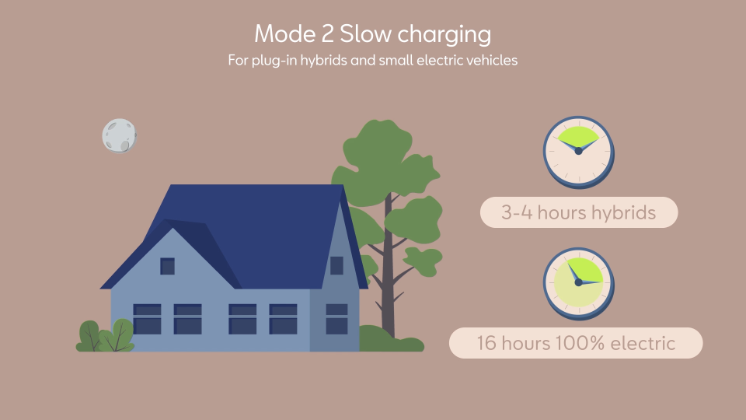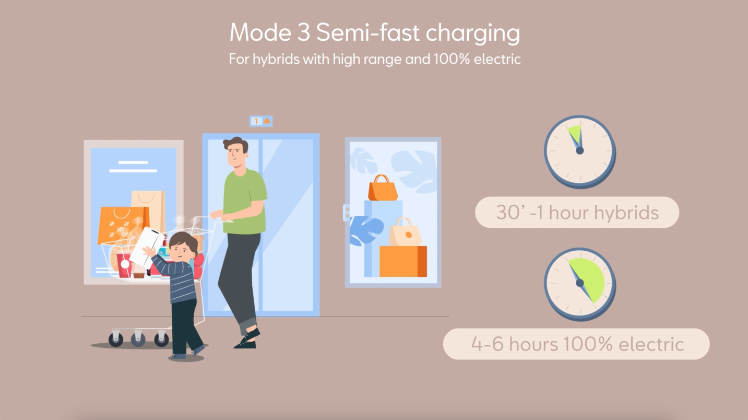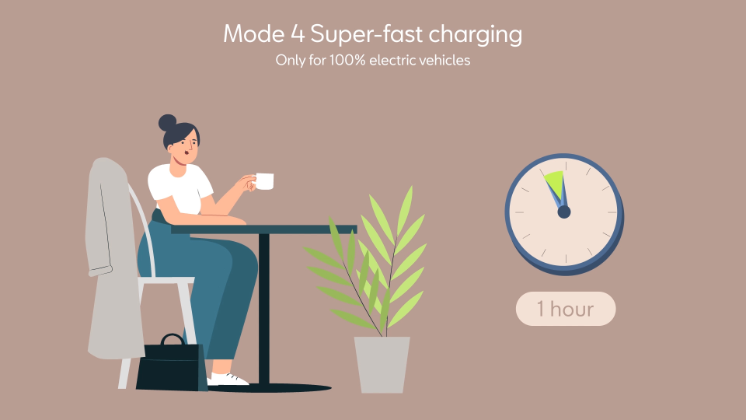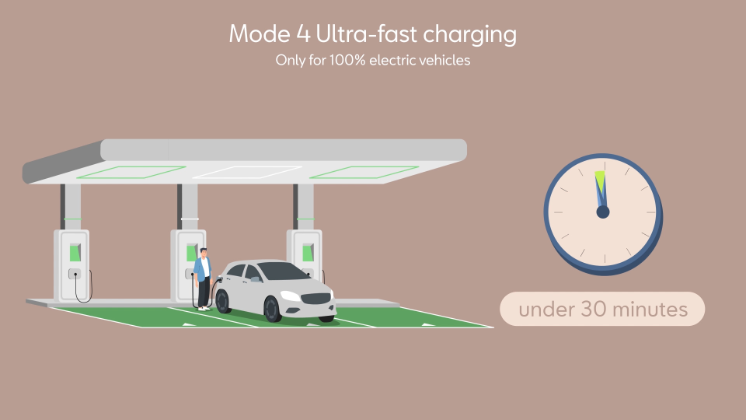The mobility of the future is being powered by electric wheels. A good charging infrastructure is crucial for popularising electric cars. And so is knowing which type of charging is the most appropriate according to the characteristics of the vehicle and the time and place of charging:
A matter of voltage. “Charging the battery of electric and hybrid vehicles depends mainly on two factors: the capacity of the car’s battery and the power of the available charger, and this influences the varying charging times” explains Ramón Calderón, Head of e-Mobility Institutional Relations at SEAT S.A. The battery capacity is the amount of electrical energy it’s able to store, while the power is the amount that the charger can supply to the vehicle. “Electric vehicle drivers can choose between various charging modes: type 2 (slow charging), type 3 (semi-fast charging) and type 4 (super-fast or ultra-fast charging). Depending on the capacity of your car’s battery and the power of the charger and connector cable, it will take more or less time to charge it” Ramón explains.

Overnight. If you have a plug-in hybrid car or small electric vehicle at home, you can leave it charging overnight in the garage with a type 2 slow charger. With this option, the vehicle is connected to the electrical network via an adapter that plugs into a domestic socket (Schuko type) to ensure safe charging. In this mode, (for a capacity of 3.6 kW) the battery in a hybrid takes between 3 and 4 hours to charge from 0 to 100% and an average of 16 hours in an electric, depending on the power, the cable and the capacity of the battery. However, in the case of a considerably long-range 100% electric vehicle or plug-in hybrid, like the SEAT Tarraco e-HYBRID, the most convenient option is the type 3 semi-fast charging mode. This requires a wall-mounted charging device, popularly known as a wallbox, which is equipped with various protection systems necessary for the safety of the electrical installation and the vehicle. “Due to its safety, reliability and speed, the use of mode 3 is prevailing over mode 2 as the charging power and battery capacity of electric vehicles increases” says Ramón. This mode enables you to use higher power ratings at home, and at the same time optimise charging times. A hybrid like the CUPRA Formentor would be charged in less than 3 hours and a 100% electric vehicle in less than 10 hours on average, depending on the power and characteristics of the battery.

An afternoon of shopping. Away from home, most public charging points are required to have type 3 or semi-fast chargers. In this mode, the electric or hybrid vehicle is connected to the AC grid via Mennekes connectors. Bearing in mind that the power of these public charging points is higher (around 11 kW), the average charging time for a plug-in hybrid will be between 30 minutes and 1 hour, while for a 100% electric vehicle, charging from 0 to 100% will take between 4 and 6 hours.
A coffee break. The super-fast mode 4, intended only for long-range fully electric vehicles like the CUPRA Born, enables you to recharge at least 70% of the battery in just over 30 minutes (for a 100 kW charger), the time it takes to stop for a coffee, and 100% in approximately one hour. Unlike the previous modes, which use alternating current, mode 4 recharging is carried out in direct current, which enables faster charging as the vehicle does not have to make any conversions. The standard connector most commonly used for this type of charging is the CCS. “Given their high price and installation cost, these chargers are neither designed nor recommended for domestic use, and together with mode 3, are the ones that users will find in shopping centres, on public roads or at workplaces” says Ramón. The type 4 units also include ultra-fast chargers, especially designed for outdoor public EV charging stations, where you can recharge your vehicle during long journeys or in situations where you have very little time to wait. With this mode, which can exceed 250 kW of power, an average 100% electric car would be charged in less than 30 minutes.


It’s important to note that the charger and vehicle communicate continuously during charging so as not to exceed the admissible power of the battery. In other words, a vehicle that can be charged at a maximum power of 125 kW, even if it is charged on a 250 kW charger, will never exceed 125 kW. The opposite is also true; even if the vehicle can be charged at 250 kW, a lower power charger will never exceed it.